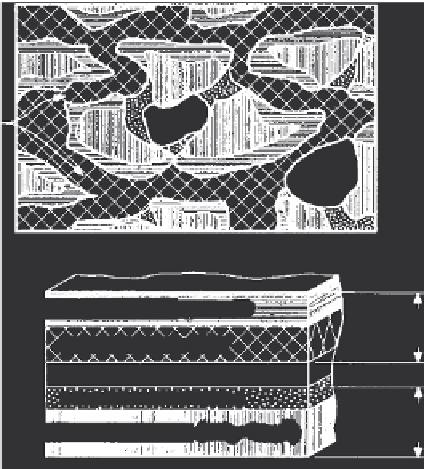Agriculture Reference
In-Depth Information
(a)
Dynamic soil region (f
p
g/cm
3
)
Dynamic
region
Mobile water (8 im)
AIR
Immobile water (8 im)
Stagnant soil region ((l-f )
p
g/cm
3
)
Stagnant
region
(b)
FIGURE 8.2
Schematic diagram of unsaturated aggregated porous medium. (A) Actual model; (B) simpli-
fied model. The shading patterns in A and B represent the same regions. (From M. Th. van
Genuchten and P. H. Wierenga. 1976.
Soil Sci. Soc. Am. J.
40: 473-480. With permission.)
nonequilibrium is a controlling mechanism of solute behavior in porous
media. On the other hand, chemically controlled heterogeneous reac-
tions are the governing mechanisms for the two-site (equilibrium/kinetic)
approaches (see Chapter 5). However, one can show that the two models are
analogous mathematically. Therefore, analysis of data sets of effluent results
from miscible displacement experiments alone is not sufficient to differenti-
ate between physical and chemical processes as causes for often observed
apparent nonequilibrium behavior in soils. The similarity of the two trans-
port models also means that the two formulations can be used in macro-
scopic and semiempirical manner without having to delineate the exact
physical and chemical processes on the microscopic level (Nkedi-Kizza et
al., 1984; Selim and Amacher, 1988).
8.3.2 Estimation of
α
One major assumption of the mobile-immobile model is that of uniform sol-
ute distribution in each water phase. In addition, solute transfer between
the two water phases is assumed to follow an empirical first-order diffusion
mechanism. An alternative to this approach is to assume spherical aggregate
geometry with water within the aggregates as the immobile water phase

Search WWH ::

Custom Search